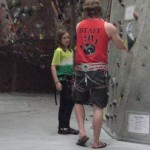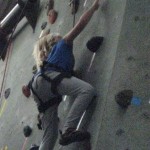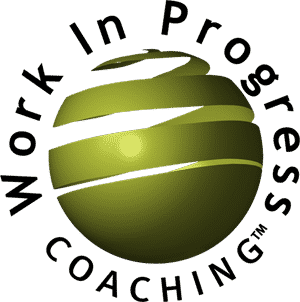When visiting last week, my two AZ nieces demonstrated the job of a kid: try stuff and see what happens. It’s a job for adults, too.
The 7 and 10 year-old were in constant motion – boogie boarding, cart wheeling, tree climbing.


The lesson’s pretty clear, right? Commit to trying something new. Follow instructions. Step Off. Listen for encouragement. Smile. Feel good about your accomplishment.
There’s fearless, then there’s Fearless
On Oct. 14, the world watched as Fearless Felix stepped off the edge of his capsule and fell 24 miles to earth. His journey lasted 9 minutes and 3 seconds. He reached an unofficial speed of 834 mph and broke the sound barrier.
Felix’s edge is not mine, nor my nieces, nor yours. Each of us has a unique edge, a place where we stop and go no further. BTW, not crossing your edge is completely acceptable. It’s when we want to accomplish something that’s beyond our current edge that I’m addressing.
My hypothesis: Stepping over our edge isn’t just about the goal.
It’s about building our capacity to go after goals. It’s about building self-confidence. Test my hypothesis against your own experience.
- Way before you’ve mastered a skill, be it physical (rock climbing) or emotional (not flying off the handle) or professional (being a leader) or personal (being a parent), what you are building in the process of learning the skill is your capacity to learn. (I’m learning to play the guitar.)
- When you fail to reach a goal and continue to pursue it, what you are building is your capacity to preserve. (I know why they call it the “F” chord.)
- When you tell the truth about what you did or didn’t do, you build your capacity to be trusted by others and by yourself. (I don’t practice every day which is my promise to me.)
While our focus in on the outcome, it’s the process itself of learning, persevering, telling the truth that’s giving us a result that’s equally as valuable as the outcome: we’re gaining confidence and building our capacity to change.
Come to the edge, he said. They said: We are afraid. Come to the edge, he said. They came. He pushed them and they flew. – Guillaume Apollinaire |
So, adults, let’s learn from the kids:
- Make a commitment to engage in something that really excites and lights you up.
- Find your edge. Regarding what lights you up, where do you stop now?
- Find someone to hold the support rope. Their role is to remind you of your commitment, especially when you forget.
- Be willing to fail and get back up. “… This thing we call “failure” is not the falling down, but the staying down.” Mary Pickford, actress
- Ring the bell for each and every small victory.
Here’s to each of us channeling just enough Felix and the children when we need it most.
Subscribe
Get Camille's latest posts!
